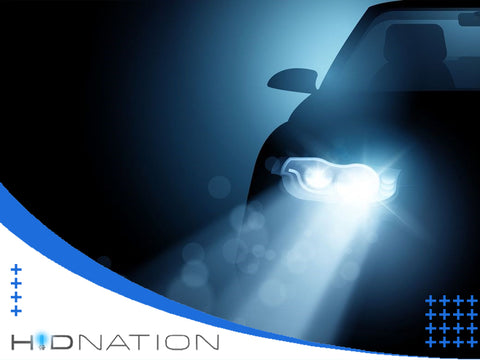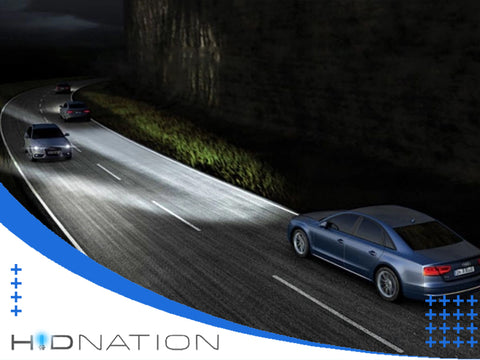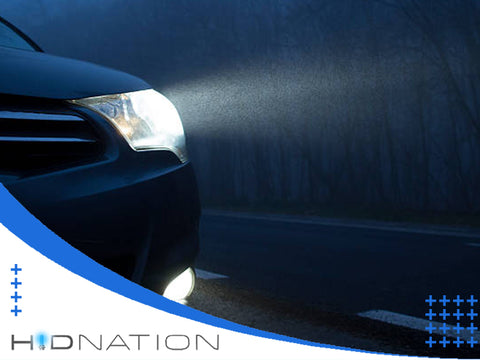The automotive lighting industry is undergoing a significant change. Halogen headlights are being replaced by super-bright LEDs that benefit drivers and car manufacturers alike.
Drivers transitioning from halogen headlights to LED lights will notice an immediate difference in the quality of light. As a result, they'll be able to see the road better at night.
Improved Visibility
The improved visibility that LED automotive lighting provides helps drivers navigate the road safely. LED headlights make oncoming traffic much more visible, allowing drivers to avoid collisions with other vehicles or pedestrians.
The brightness of the LEDs can also be adjusted, and it is possible to adjust them to different road conditions.
In addition, LEDs have a longer lifespan than halogen and HID bulbs. Most bulbs last at least 30,000 hours, and many will have a lifetime of twenty years or more.
Another benefit of LED lighting is that they do not heat up like other light sources.

Many manufacturers have started using LEDs in their cars, although they are still primarily used in luxury vehicles.
You can choose from several types of LEDs, including projector and reflector lights.
The most popular type of LED headlight is a projector design, which looks like a circular light with a clear center. This gives you a bright, clean light that can be seen from all angles on the road.
Some have Bluetooth capabilities, making them easy to control with an app.
You can find durable LED headlights that provide the best visibility on the road at affordable prices. You should consider the brightness, the lifespan, and the design of the headlight before making your decision.
Increased Safety
The demand for safety features and the rise in road accidents worldwide fuels the increase in demand for advanced automotive lighting systems. These lights also automatically change their light pattern if an intelligent camera-based sensor system directs them to do so.

These lights are also much more durable than halogen or xenon bulbs, which have a much shorter rated life and require more maintenance and repair costs. For example, a set of xenon headlights can fail after only two years, while a set of LED lights will last for as long as 15 years or more.
LED lighting systems can also be more energy efficient than halogen or xenon lamps. They can use up to 40% less energy than a typical filament or discharge lamp.
In addition to these benefits, these lights are safe to operate and do not pose the same fire risk as traditional lighting systems. These lighting systems comply with international standards and meet the requirements of road safety regulations.
Reduced Energy Consumption
LED automotive lighting is a great way to reduce energy consumption while increasing your vehicle's safety. This can be a massive benefit to drivers and car dealerships alike.
Compared to halogen or xenon headlight bulbs, LEDs use far less power. This means that your battery will last much longer as well.
Additionally, LEDs are incredibly safe and do not produce much heat. This makes them a safer alternative for vehicles than halogen bulbs.
Many car manufacturers are now switching to LED lights for interior and exterior lighting.

These lights are incredibly bright and can be used for many different purposes. These include daytime running lights, turn signal lights, and fog lights.
Some of these lights are even used in your vehicle's interior to help you keep track of where you are at all times while driving.
Another benefit of LED lighting is that they are very efficient. LEDs can save up to 75% of your electricity bill.
This can also be a huge saving for your business, so consider making the switch today!
For instance, many car dealerships have found that LEDs can make their showrooms pop and lots glisten while saving them money on their monthly electricity bills. Moreover, bright lights can help workers in the shop stay safer and increase productivity.
They are also much longer lasting and can save your dealership money on replacements in the long run. So while it might seem like a lot of money upfront, the savings will be worth it.
Aesthetically Pleasing
Adding LEDs to your vehicle is a great way to repower it and add a touch of elegance. It is a simple process requiring no special tools or skills. Generally, you will need to find the right size and filament type for your particular vehicle.
It is no secret that the automotive industry is looking for ways to reduce energy consumption and improve the safety of its products. As a result, LED lighting has become the choice for many new cars and trucks.
LEDs offer many benefits over their incandescent predecessors, including a more robust design and a longer lifespan. They also produce more light, less glare and better visibility for drivers of all abilities.
Conclusion
In addition to being a great energy-efficient alternative to standard headlights, LEDs can provide car owners with other perks, such as increased safety and the ability to display information in the most stylish way possible. For example, manufacturers are developing adaptive headlight technology for various features, from illuminating pedestrians to displaying turn signal indicators. Unfortunately, these technologies are not yet street-legal.
While they might be a little pricey, the newest LED bulbs have a much longer lifespan and are more durable than their predecessors. Another benefit is that they can be integrated into almost any car or truck, regardless of its make and model.
Read Also: Shedding Light on the Automotive – Upgrade Your Vehicle with the Best Lights
The best part is that they look much better than traditional bulbs so you will have a more stylish ride on the road or in the garage.
FAQs
What Are the Benefits of LED Headlights?
LEDs are incredibly energy efficient. They use up to 40% less energy than halogen or xenon HID bulbs and can extend the life of your car battery by months.
Despite their popularity, LEDs have some drawbacks that drivers should consider before switching to them. These include price, extra components, and glare.
Are LED Headlights Better Than Halogen?
Light-Emitting Diode (LED) headlights are a far more advanced technology than halogen and high-intensity discharge (HID) lights.
They operate about 90% more efficiently than incandescent bulbs and generate less heat, making them more durable. Plus, they’re available in various color temperatures and styles, giving automakers the flexibility to design innovative lighting that’s more stylish than traditional bulb-type fixtures.
Are LED Headlights Better For Cars?
There are many benefits to upgrading your headlights.
Compared to halogens, LEDs are cheaper and will save you money in the long run.
However, there are some drawbacks to the new technology. One major one is that they require an extra component.
Why Should LED Light Signals Be Used on Every Road?
Illuminated signal lights have guided motorists and pedestrians through potentially dangerous roadway intersections for nearly 70 years.
Generally, red signals mean stop, yellow means yield, and green means proceed. These colors are standardized worldwide.
What is the Purpose of Lights on the Road?
The purpose of lighting on roads is to make traffic and obstructions clearly visible to promote safety and convenience.
Proper street lighting improves the safety of drivers and pedestrians by increasing visibility and reducing glare from other sources. This reduces stress on drivers and increases their confidence in driving.




